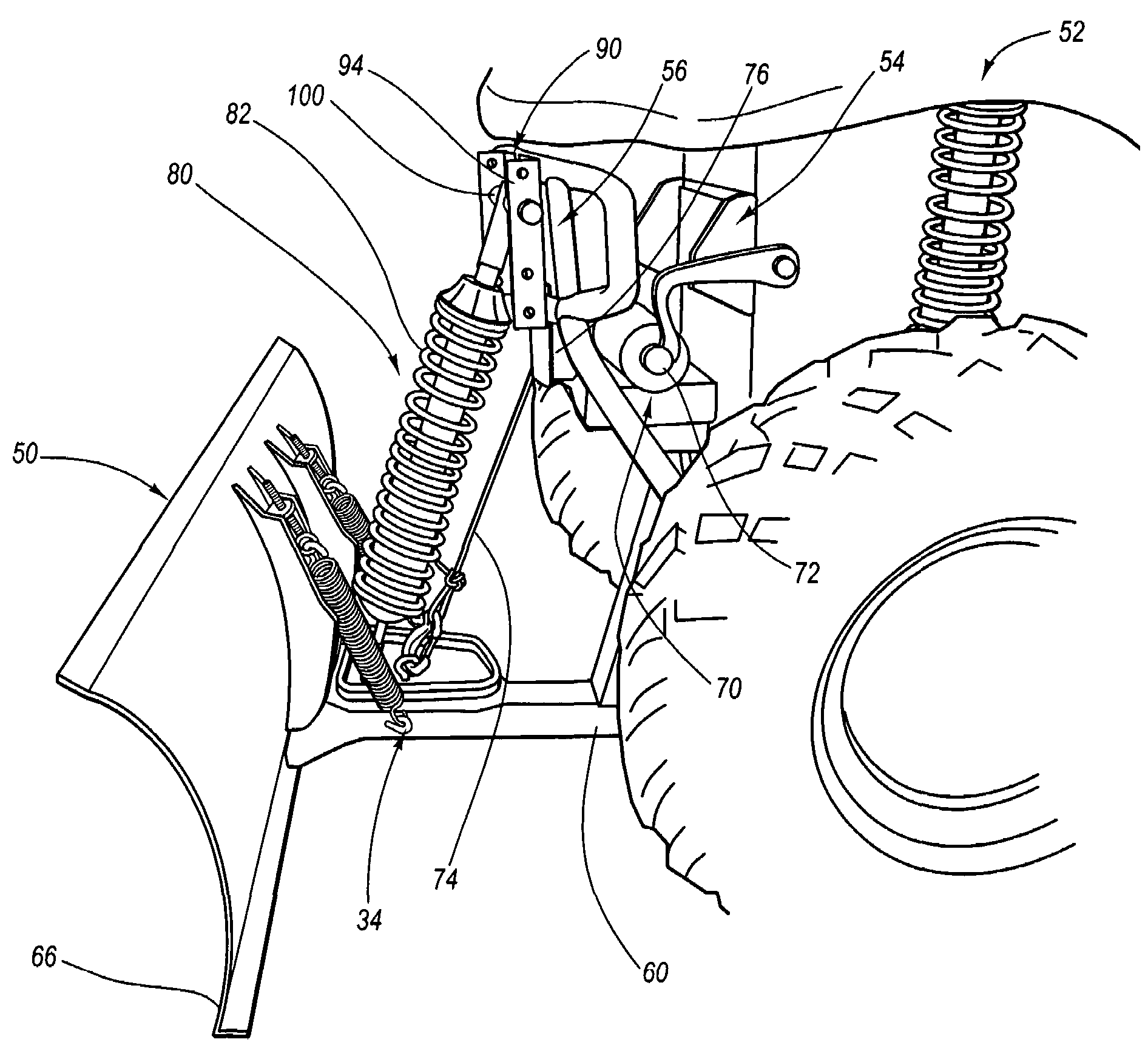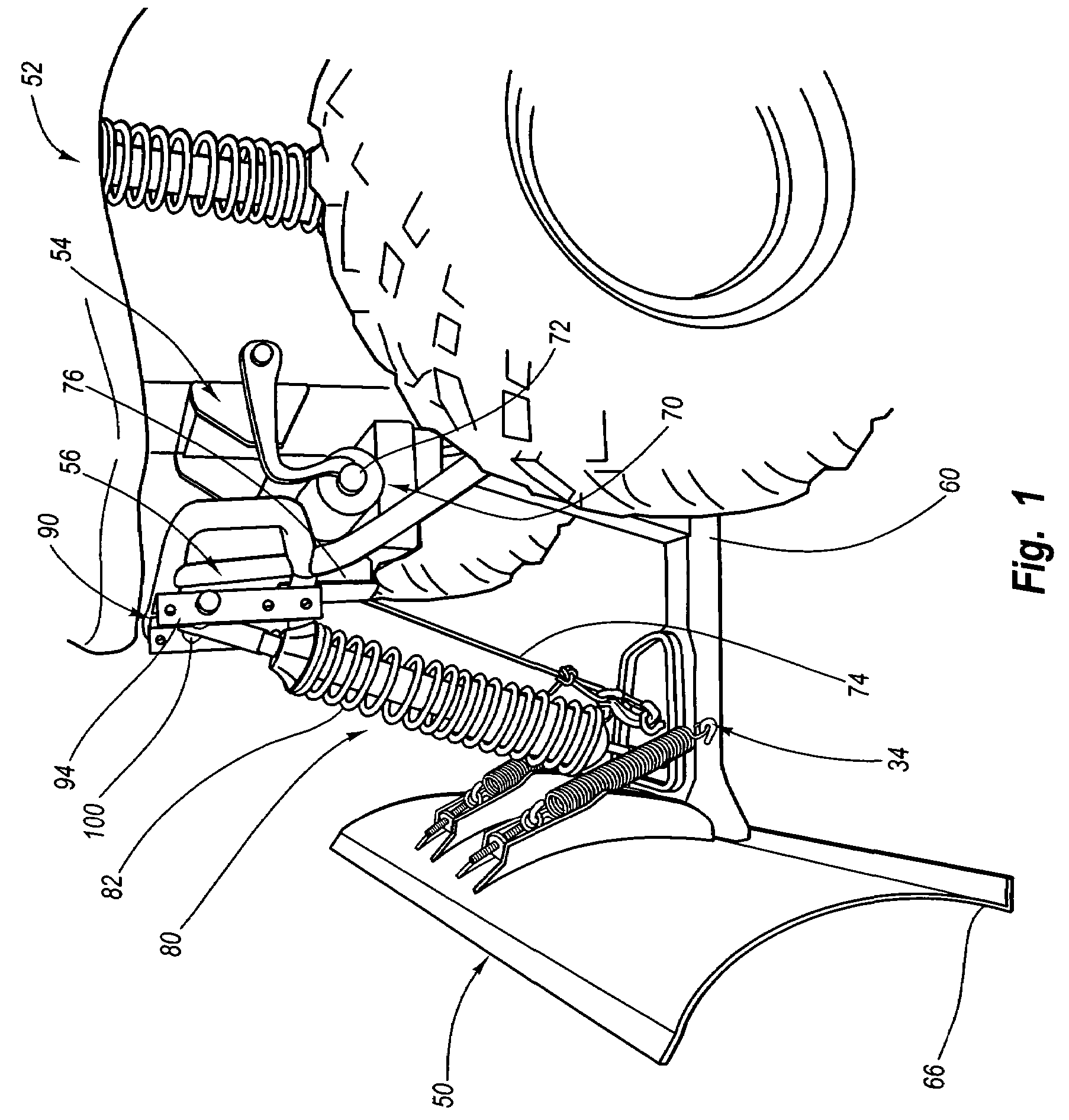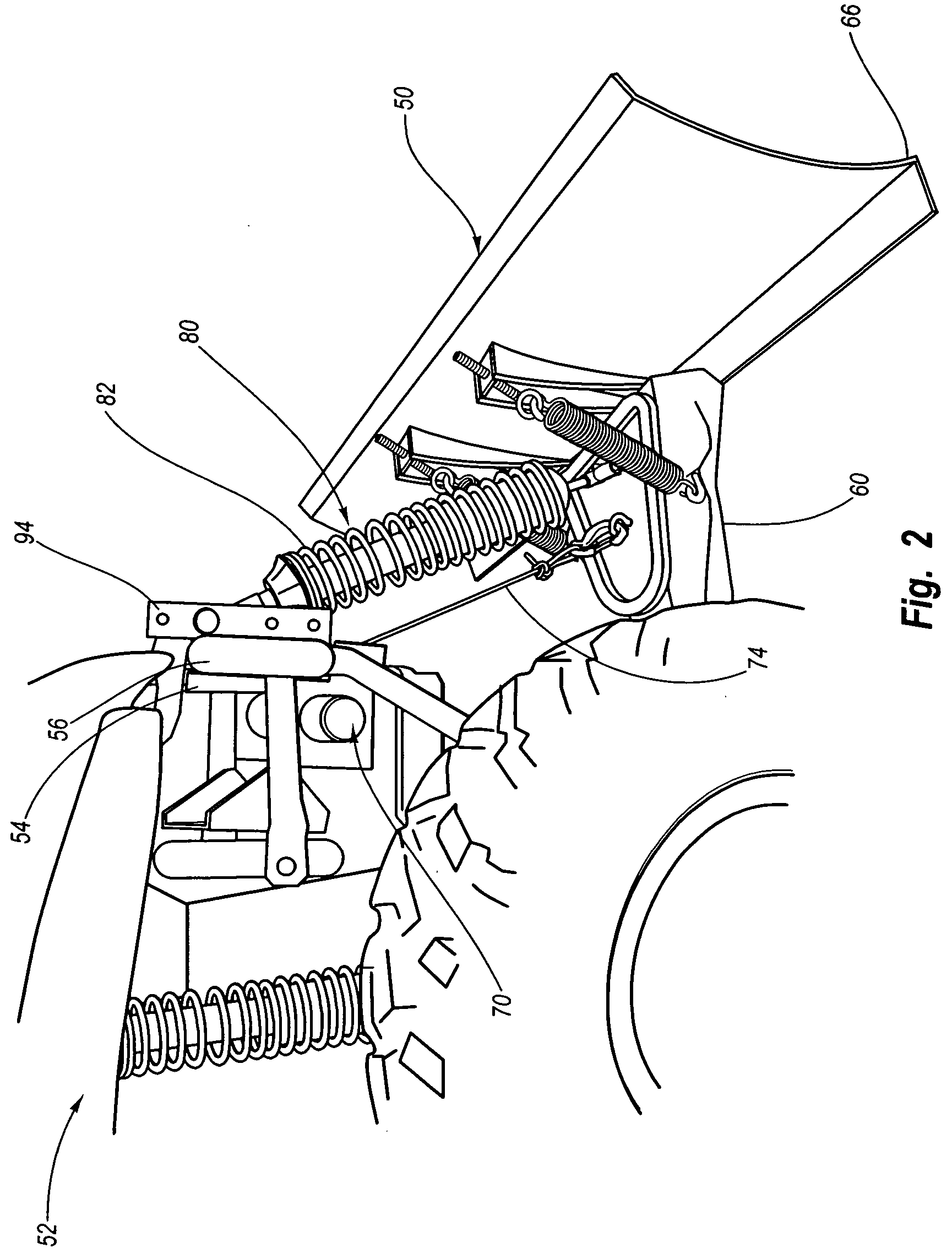As a result, such vehicles are frequently used in connection with
farm work,
landscaping, and other such labor-intensive activities.
A removable
snow plow, for example, may be mounted to a small vehicle to remove snow and ice from various surfaces, such as driveways, sidewalks, short road segments, parking lots, and other similar relatively limited areas of space that are too small for a full size snow plow to maneuver, yet large enough that shoveling by hand would result in a very labor intensive and
time consuming task.
First, small vehicles such as ATVs are typically quite maneuverable.
Fourth, there is virtually no physical
exertion or energy expended by the operator of a small vehicle, as opposed to a significant amount where shoveling by hand.
Due in part to the space occupied underneath the vehicle by the plow frame, however, and also due to the cant of the plow blade, the plow blade cannot typically be raised more than 2 or 3 inches off of the ground.
Moreover, many prior art plow designs suffer from the following deficiencies.
First, many plow users lack the strength or energy required to manipulate the plow blade in a manually operated
system.
Second, prior art plow systems are generally difficult to
mount and remove from a vehicle.
With the plow installed, the vehicle is virtually useless for any other purpose.
Indeed, as discussed above, there is very little clearance under the bottom
cutting edge of the plow blade even when the blade is completely lifted.
There is also very little clearance under the
chassis of the vehicle due to the presence of the mounting frame beneath the
chassis.
Further, the weight of the plow substantially alters the maneuverability of the vehicle to which it is attached.
Another drawback to prior art systems is that many small vehicles, especially ATVs, are relatively light in weight (e.g., lighter ATVs range from about 450 lbs. to 600 lbs. in total weight not including the weight of the plow).
Such vehicles thus tend to be underpowered or lack sufficient traction to move large quantities of snow.
Another problem associated with prior art plow designs is blade floating, which results in irregular and / or uneven ground surfacing.
Also, blade floating leaves behind residual snow and ice deposits, which may build up and create
slush and other problems once warmer weather arrives.
Adding weight to the blade of the plow helps reduce floating, but requires the vehicle to work harder and lose critical traction.
When the blade is forced down under added weight, the vehicle has a much more difficult time pushing the blade and gripping the surface, effectively negating any efficiency in blade leveling that may otherwise have been gained.
During the period the blade is pivoted, however, the bottom edge of the plow loses contact with the ground, thus forming a residual
ridge of snow and ice.
A secondary effect of such a
ridge is that as the tires of the vehicle cross the
ridge, the vehicle is lifted up over the ridge, often causing the plow to temporarily leave the ground.
Once the object is cleared, the spring causes the blade to abruptly snap back into position, thus contributing to further leveling and / or floating problems.
Another
disadvantage to traditional plow systems, particularly to V-plow systems where a pair of plow blades is connected along a vertical hinge, is that it is difficult to maintain the bottom
cutting edge of the plow blade flush with the ground surface unless the plow is precisely mounted on the vehicle and the plow blades are accurately positioned to align the bottom
cutting edge flush with the ground.
In addition, it is difficult or even impossible to provide evenly distributed downward pressure to a V-blade plow as the bottom cutting edge of the V-plow does not in general remain flush with the ground surface when rotated downward.
Although an operator-controlled
actuator mechanism that provides power to an electric
actuator to raise and lower the plow may overcome some of these deficiencies, prior art designs that incorporate such a mechanism nevertheless suffer from certain inherent problems.
Namely, electrically powered plow designs in the prior art tend to add a significant amount of weight to the plow as a result of requiring a proprietary motor.
Also, the incorporation of such a motor renders the plow much more expensive than a manually operated plow.
 Login to View More
Login to View More  Login to View More
Login to View More 


